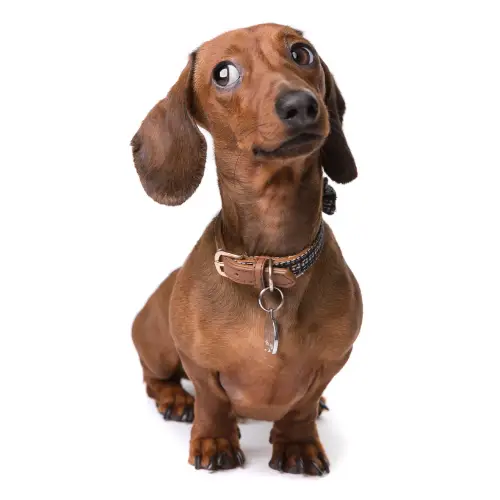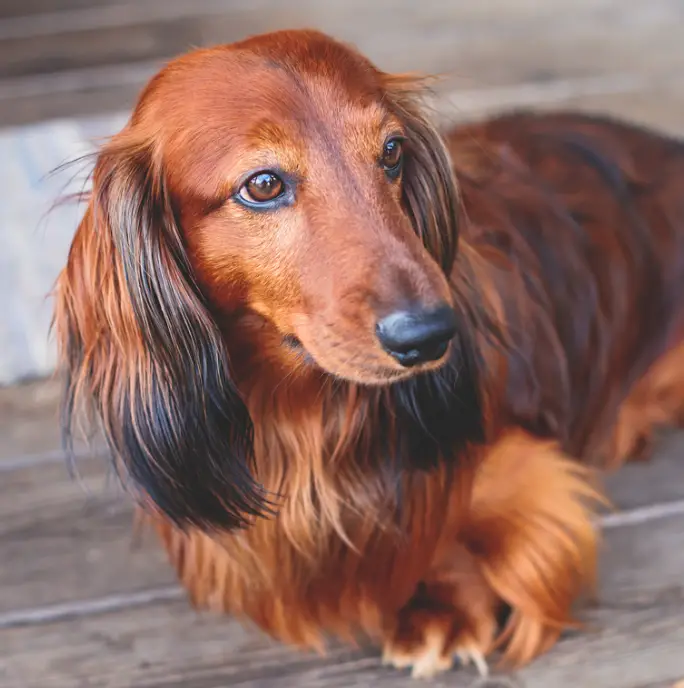Dachshunds, also known as “sausage dogs” or “wiener dogs,” are a popular breed known for their long, sausage-like body and playful personalities. One of the unique features of dachshunds is the variety of colors and patterns they come in. From classic black and tan to unique dapple and brindle patterns, dachshunds can come in a wide range of colors and patterns.
In this article, we will explore the different colors and patterns of dachshunds and what makes each one unique. From the traditional black and tan to the striking dapple pattern, we will take a closer look at the different ways dachshunds can come in. With so many options to choose from, it’s no wonder dachshunds are a popular breed among dog lovers.
Most Common Colors Of Dachshunds
The most common color for Dachshunds is brown or black. This color is often referred to as “chocolate” or “black and tan.” These colors are the result of the presence of eumelanin, a pigment that produces brown or black hues in the coat.
Another common color for Dachshunds is red or cream. This color is often referred to as “red” or “cream.” These colors are the result of the presence of phaeomelanin, a pigment that produces red or cream hues in the coat.
There are also Dachshunds that have a combination of these colors, such as black and tan with cream or red, or chocolate and cream. These are known as “dappled” Dachshunds.
It’s important to note that Dachshunds can also be found in other colors such as blue and tan, isabella and tan, and even piebald (white with colored spots). However, these colors are less common and not as widely recognized as the traditional brown, black, red, and cream.
Most Common Color Combinations
The most common color combinations for Dachshunds are:
- Black and tan: This combination features a black coat with tan markings on the eyebrows, cheeks, legs, and underbelly.
- Chocolate and tan: This combination features a chocolate-brown coat with tan markings on the eyebrows, cheeks, legs, and underbelly.
- Blue and tan: This combination features a blue-gray coat with tan markings on the eyebrows, cheeks, legs, and underbelly.
- Isabella and tan: This combination features a light fawn-colored coat with tan markings on the eyebrows, cheeks, legs, and underbelly.
- Black and cream: This combination features a black coat with cream markings on the eyebrows, cheeks, legs, and underbelly.
- Chocolate and cream: This combination features a chocolate-brown coat with cream markings on the eyebrows, cheeks, legs, and underbelly.
Different Patterns On Dachshunds
As you may have noticed, patterns can involve many colors, markings, and even multiple other patterns.
Overlay, Ticking, and Striped are other terms used to denote additional marks.
Even while they can carry patterns and produce patterned offspring, there may occasionally be no discernible pattern. This is very crucial to remember when it comes to breeding Dapples
- Dapple (Merle)
A dapple design is made up of erroneous spots or splotches of light pigment that are layered over a darker color. On a background of brown, black, or tan, you’ll typically see patches that are white, silver, or grey.
Additionally, you can mix Piebald, Sable, and Brindle patterns with dapples, as well as add body shading and ticking.
Dapple may or may not be totally visible, and it may or may not look like anything more than a bald spot with an unattractive hue. Despite having dapple parents, they might also have a solid color appearance.
Both scenarios qualify the dog as dapple.
This is a crucial distinction to make because it is never recommended to breed two merle carriers because doing so results in what is known as a Double Dapple.
- Hidden Dapple
If you can believe it, this dog is a dapple. Since both of his biological parents were dapple, the puppy is a carrier. Additionally, pay particular attention to the little (barely perceptible) black hair patch on the ear.
- Double Dapple (Double Merle)
When two merle (dapple) carriers breed, the resulting litter is referred to as “double dapple” and is much more likely to experience health problems. being born frequently blind, deaf, or both.
Consequently, it is against the law and regarded as cruel to breed two merle gene carriers.
Only solid-colored partners that are known to be non-merles should be bred with merle carriers.
With a few merle patches, Double Dapples are primarily white or very pale in color. Eyes can be blue on one or both sides. The nose and paw pads may have brown, pink, or tan patches of pigmentation.
It’s not always the case that dachshunds with mainly white coats are doubly dappled. The dilution gene, the piebald pattern, or a very light cream color could all contribute to this.
Double dapples may have various indications, including as blue eyes, pink eye rims, pink nose, or pink paw pads.
- Brindle
Due to its superficially comparable marked red-hued and black stripes, Brindle is referred to as having “tiger stripes” by many breeds (and animals).
Although brindle and wildboar shouldn’t be mistaken. While Brindle has more stripes than Wildboar, they both have comparable coloring but Wildboar is noticeably lighter.
Brindle is still a favorite among pet owners despite not being recognized by the AKC.
- Sable
While the rest of the hair develops into (most frequently) red, sable has black tips. If you closely inspect the undercoat, you can detect lighter hair that is closer to the skin.
Contrary to shading, which is the mixing of pure black hairs with red or cream hairs, is the term “pure black hairs.”
Shading refers to numerous solid-colored hairs on the same coat, whereas Sable refers to solitary hairs that are multicolored. Sable does not appear on coats with wire or silky hair.
- Piebald
By definition, a piebald or pied person is made up of portions that don’t match or are different hues.
It’s the occurrence of white patches on top of darker hair, fur, or feathers in animals. Many owners misunderstand this and believe the dark patches are placed on top of the white. Typically, since white is far more common.
Piebald is caused by a typical (and benign) gene mutation that can be found in a wide variety of mammals and reptiles. It produces a multicolored, spotty coat for Dachshunds that can be blended with any other color or pattern.
Conclusion
In conclusion, Dachshunds come in a wide variety of colors and patterns, including black and tan, chocolate and tan, red, cream, and even dapple. These colors and patterns can be solid, bi-color, or dapple. Dachshunds are a beloved and unique breed, and their colors and patterns are just one of the many things that make them special. Whether you prefer a classic black and tan Dachshund or a unique dapple one, there is a Dachshund out there that is perfect for you.






